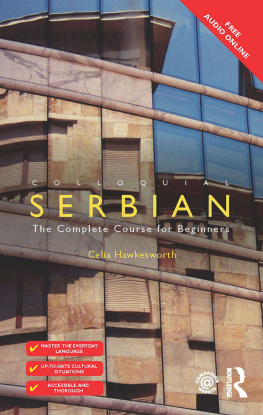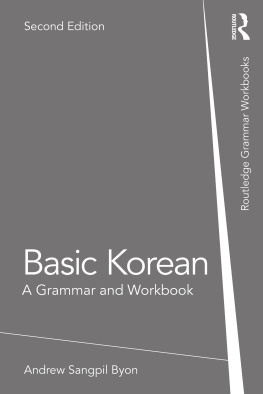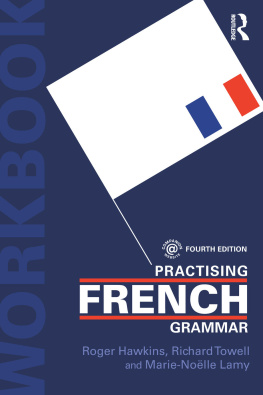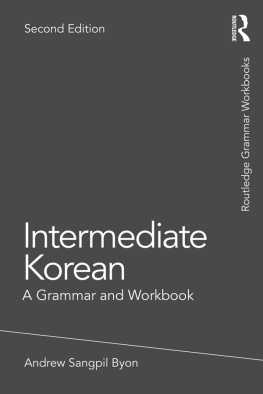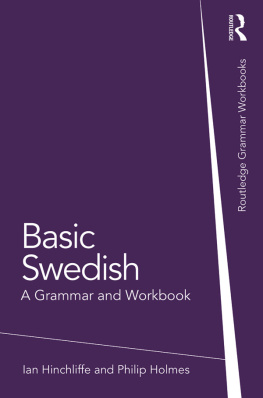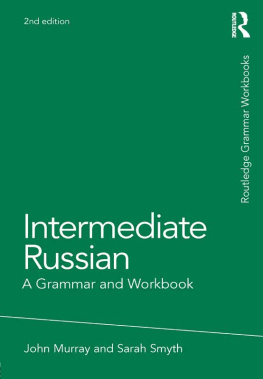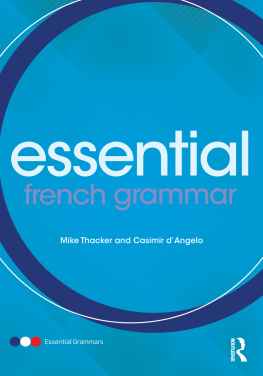Intermediate Welsh
Intermediate Welsh: A Grammar and Workbook is designed for learners who have achieved basic proficiency and wish to proceed to more complex language. It presents a broad range of grammatical topics, illustrated by examples, which serve as models for the varied exercises that follow. The emphasis throughout is on colloquial spoken Welsh used by modern-day native speakers. Features include:
- a clear, accessible format;
- many useful language examples;
- jargon-free grammar explanations;
- sample drills and exercises;
- a full key to the exercises.
This new edition has been redesigned for greater clarity and further examples have been updated.
Gareth King was UCAS Co-ordinator, Oxbridge Applications Co-ordinator and Latin Co-ordinator for a large sixth-form college. He is also the series adviser for the Colloquials, and the author of numerous books for learners of Welsh, including Modern Welsh: A Comprehensive Grammar, The Routledge Intermediate Welsh Reader and Basic Welsh, the companion volume to this one.
Other titles available in the Grammar Workbooks series are
Basic Arabic
Basic Cantonese
Intermediate Cantonese
Basic Chinese
Intermediate Chinese
Basic Dutch
Intermediate Dutch
Basic German
Intermediate German
Basic Irish
Intermediate Irish
Basic Italian
Basic Japanese
Intermediate Japanese
Basic Korean
Intermediate Korean
Intensive Basic Latin
Intensive Intermediate Latin
Basic Persian
Intermediate Persian
Basic Polish
Intermediate Polish
Basic Portuguese
Basic Russian
Intermediate Russian
Basic Spanish
Intermediate Spanish
Basic Swedish
Basic Welsh
Intermediate Welsh
Basic Yiddish
For more information on the series, please visit: www.routledge.com/languages/series/SE0519
Intermediate Welsh: A Grammar and Workbook
Second edition
Gareth King

Second edition published 2018
by Routledge
2 Park Square, Milton Park, Abingdon, Oxon, OX14 4RN
and by Routledge
711 Third Avenue, New York, NY 10017
Routledge is an imprint of the Taylor & Francis Group, an informa business
2018 Gareth King
The right of Gareth King to be identified as author of this work has been asserted by him in accordance with sections 77 and 78 of the Copyright, Designs and Patents Act 1988.
All rights reserved. No part of this book may be reprinted or reproduced or utilised in any form or by any electronic, mechanical, or other means, now known or hereafter invented, including photocopying and recording, or in any information storage or retrieval system, without permission in writing from the publishers.
Trademark notice: Product or corporate names may be trademarks or registered trademarks, and are used only for identification and explanation without intent to infringe.
First edition published by Routledge 1996
British Library Cataloguing-in-Publication Data
A catalogue record for this book is available from the British Library
Library of Congress Cataloging-in-Publication Data
Names: King, Gareth, 1955- author.
Title: Intermediate Welsh : a grammar and workbook/Gareth King.
Description: Second edition. | New York, NY : Routledge, [2018] | Previously published by Milton Park, Abingdon, Oxon : Routledge, 1996.
Identifiers: LCCN 2017048662| ISBN 9781138063785 (hardcover : alk. paper) | ISBN 9781138063808 (softcover : alk. paper) | ISBN 9781315160832 (ebook)
Subjects: LCSH: Welsh language Grammar Problems, exercises, etc.
Classification: LCC PB2123. K554 2018 | DDC 491.6/682421 dc23
LC record available at https://lccn.loc.gov/2017048662
ISBN: 978-1-138-06378-5 (hbk)
ISBN: 978-1-138-06380-8 (pbk)
ISBN: 978-1-315-16083-2 (ebk)
Typeset in Times New Roman
by Apex CoVantage, LLC
This book is dedicated
to the memory of my friend
Peter Stoneham
19541983
Contents
This workbook, now in its second, revised edition, is intended as a grammar-based self-tutor and self-tester for those in the more advanced stages of learning Welsh. A companion volume (Basic Welsh) is available for beginners. Forty grammatical points are dealt with in each volume, with exercises designed to drill the user and test understanding. Answers to all exercises are given at the back of the book.
For simplicity and convenience, given the particular difficulties presented by Welsh as regards regional and dialectal variation in many common words, I have generally adopted the following as standard forms throughout (with equally valid alternatives given in parentheses):
- dw i I am (wi; rwy)
- dyn ni we are (yn ni; dan ni)
- dych chi you are (ych chi; dach chi)
- e, fe he/him (o, fo)
though Northern forms like fo and dan ni will of course occur in examples dealing with specifically Northern constructions. Throughout the book, N indicates Northern forms and S Southern forms.
As far as initial consonant mutations are concerned, I have erred on the side of caution, again for the sake of simplicity. On the other hand, it is no secret that the applications of the mutations in the modern living language do not conform to a standard pattern, however much some authorities may try to make them, or claim that they do. On purely practical grounds, I see no value or point in pretending, for example, that instances of Aspirate Mutation like bws a thacsi are correct Welsh simply because the handbooks of the literary language tell us so. They are certainly not natural in speech, and therefore by all the criteria of modern linguistics they can hardly be regarded as authentic.
In the exercises that form an integral part of each unit, I have aimed at an unashamedly grammatical approach in drilling the student on the points raised in the unit this is, after all, a grammar workbook, and in any case I see no reason to apologize for grammar, which went through a period in recent years of being rather a dirty word among educationalists, but which remains nevertheless an indispensable part of learning any language. The reader will notice, however, that some units deal with uses of particular words rather than a specific grammatical point, and I have thought it better in these cases simply to provide translation practice only rather than the mix of translation, grammar drilling and cloze exercises that is presented elsewhere. Considerations of space have placed limitations on the key to exercises at the end of the book: it is not unusual in a language like Welsh to have two or even three equally valid ways of phrasing a particular English expression, but it must be borne in mind that very often I have had to pick one variation and silently pass over another, and I ask the users indulgence in this. I have, however, tried to ensure that variants be given their due in the body of the workbook.
In this book I have again used a special symbol to indicate the Soft Mutation (SM): used after a word, it means that the word causes SM of the next word so, for example, am means that a word following am will undergo SM: punt, but am bunt. Used before a word, it indicates that that word is already in its mutated form so, for example,




